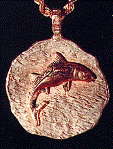Black Tuna Gang

The Black Tuna Gang was the name given to Robert Platshorn and Robert Meinster by the media - and anti-drug agencies - in Miami in the 1970s. They were responsible for bringing in around 500 tons of marijuana into the United States over the course of 16 months, though when their accountant turned informant revealed the true scope of their operations, the numbers were much, much smaller. The group never called themselves the "Black Tuna Gang". The first time the phrase came about was during the media frenzy surrounding their trial after the reporters learned the DEA claims that the two members wore a solid gold medallion with a black tuna emblem to identify themselves.
The gang used specialized equipment to listen in on conversations by police and US Customs. They also displayed a certain degree of creativity, once sending Jimeno a box of diapers to signal they were ready to go ahead with a drug deal.
The gang operated at least at one time from a suite in the Fontainebleau Hotel in Miami Beach, and arranged bulk deliveries to a boathouse. They also modified the painted water line on boats that they could carry tons of contraband without appearing to ride low in the water.
The syndicate was eventually brought down by a joint FBI-DEA effort known as Operation Banco, which traced numerous transactions through South Florida banks until finally their accountant was caught making a large deposit in a Miami Beach bank. The trial was surrounded in controversy as the DEA and FBI made many moves that some consider an exploitation of the judicial system. The Black Tuna Gang was falsely accused of trying to assassinate the judge of the trial, by a former associate (though they say they had no part in that, and the judge was in no danger whatsoever). The judge even rejected a mistrial after a failed attempt to entrap one of the smugglers into bribing a juror.
The Black Tuna Gang was featured as part of the Rakontur documentary film Square Grouper: The Godfathers of Ganja.